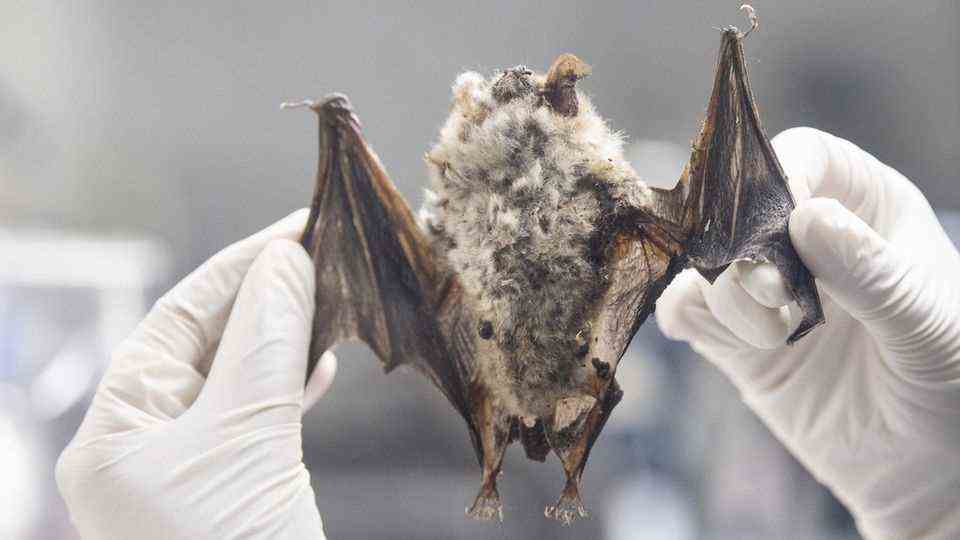A sub-variant of omicron spreads remarkably quickly in some countries – most recently in Denmark. However, little is known about BA.2. An overview.
With the spread of the omicron variant, many people are currently hoping for a quick end to the pandemic – tenor: After the current wave, the worst should be over. However, scientists warn against this idea and point to possible other virus variants that could arise in the coming months and pose new challenges.
A sub-variant of Omicron called BA.2 currently shows that the virus is still tricky – at least within the scope of its possibilities. It was recently able to spread rapidly in some countries. In Denmark, the variant accounted for around 20 percent at the end of 2021. Now their share has risen to at least 45 percent, according to the Statens Serum Institute announced a few days ago. During the same period, the share of the previous Omikron variant BA.1 also decreased.
A similar development is also evident in other countries. The UK, Norway and Sweden are also reporting increasing cases of BA.2 in the samples sequenced.
Experts suspect that the subtype could have certain evolutionary advantages compared to the omicron variant BA.1, which is still prevalent in many places. For example, the variant could be a little more contagious than BA.1, which would also explain its rapid spread. In order to be able to answer this question conclusively, however, further data are still missing. It is also unclear whether the variant will also spread to other countries. BA.2 has so far been detected in around 40 countries.
How do experts currently assess the risk potential of BA.2? How could the variant influence the course of the pandemic? And what is known about the severity of the course of the disease? Answers to the most important questions.
How are the omicron subtypes BA.1 and BA.2 related?
BA.2 did not emerge from BA.1. Instead, both cases are subvariants of omicron, also called B.1.1.529. There is one more. It is called BA.3. After the appearance of Omikron, BA.1 was initially able to assert itself in many places, including Germany. “All three sub-lines as well as the originally defined B.1.1.529 line are summarized under omicron,” writes the Robert Koch Institute (RKI) in the current issue of its weekly report.
The three sublines differ from each other in several amino acid positions. For example, there are differences between the variants in the genetic blueprint of the spike protein, which the virus uses to dock onto human cells. “For example, BA.2, in contrast to BA.1, does not have the delH69/V70 deletion,” according to the RKI.
However, missing or newly acquired mutations in the genome alone do not say anything about whether one subline is possibly more dangerous or more contagious than another. This requires further investigations.
How widespread is BA.2 in Germany?
Not too strong yet. At least that’s what the RKI numbers say from the first week of January vicinity. In the sample at that time, BA.1 was detected 1568 times, BA.2 38 times and BA.3 only once. According to the RKI, there has therefore been “no strong increase” in the BA.2 proportion as in other countries.
The parent line Omikron and the three sublines accounted for 62.4 percent of all sequenced samples in Germany at the beginning of January – followed by Delta with 37.4 percent.
How do experts rate BA.2?
“What surprised us is the speed with which this subvariant, which is circulating widely in Asia, has spread to Denmark,” French epidemiologist Antoine Flahault told AFP. Denmark originally expected the contagion to peak in mid-January, but this did not happen. This may be due to the subvariant. According to the expert, BA.2 seems to be easier to transfer than the previous Omicron type BA.1. He advised vigilance in the face of the subline. But panic is not the order of the day.
The American epidemiologist Eric Feigl-Ding wrote last Sunday on twitter, he was “concerned” about the increase in numbers with BA.2 in Denmark. In his estimation, the variant is either transmitted “much faster” or it can evade the body’s immune response even better than the previous omicron variant.
What is known about the severity of the disease?
Initial data suggest that diseases with the BA.2 variant are no more severe than with the BA.1 subline. “Very early observations from India and Denmark indicate that there is no dramatic difference in severity compared to BA.1,” wrote Imperial College London virologist Tom Peacock on Twitter. In principle, however, the data situation is still very sparse.

Omicron infections are generally somewhat milder than diseases caused by earlier variants such as Delta. It was shown that Omikron-infected less often need to be treated in intensive care units. However, experts warn that the variant could still put great pressure on the health system if a large number of people are infected at the same time.
BA.2 is also known as the “stealth variant”. What’s behind it?
BA.2 is considered a “stealth variant” because it does not have a mutation typical of BA.1. This change made it relatively easy to identify the previous omicron variant via PCR. Although BA.2 can also be proven without a doubt, this requires a more complex genome examination. Tracking the spread of BA.2 should make this much more difficult.
Why is BA.2 now being watched very closely?
It is currently of interest whether BA.2 can evade the immune protection of those who have recovered and those who have been vaccinated even better than the previous BA.1 variant. And whether, for example, people who have already recovered from Omikron can become infected again with BA.2. If this is the case, the subtype is likely to cause an increase in the number of cases in many places.
How will BA.2 influence the further course of the pandemic?
This is difficult to predict at this point in time. Further data must be awaited here. However, British virologist Peacock considers second and strong omicron waves powered by BA.2 to be unlikely at this point in time.
“Several countries have reached or even passed the peak of BA.1 waves,” Peacock continued in his tweets. He would be “very surprised” if BA.2 should immediately trigger a second, comparably strong omicron wave there. “Even with a slightly higher transferability, it is absolutely not a change like from delta to omicron, but probably a slower and more subtle one,” he says. Nevertheless, the variant could intensify existing omicron waves or delay the decrease in the number of cases, he predicted.


